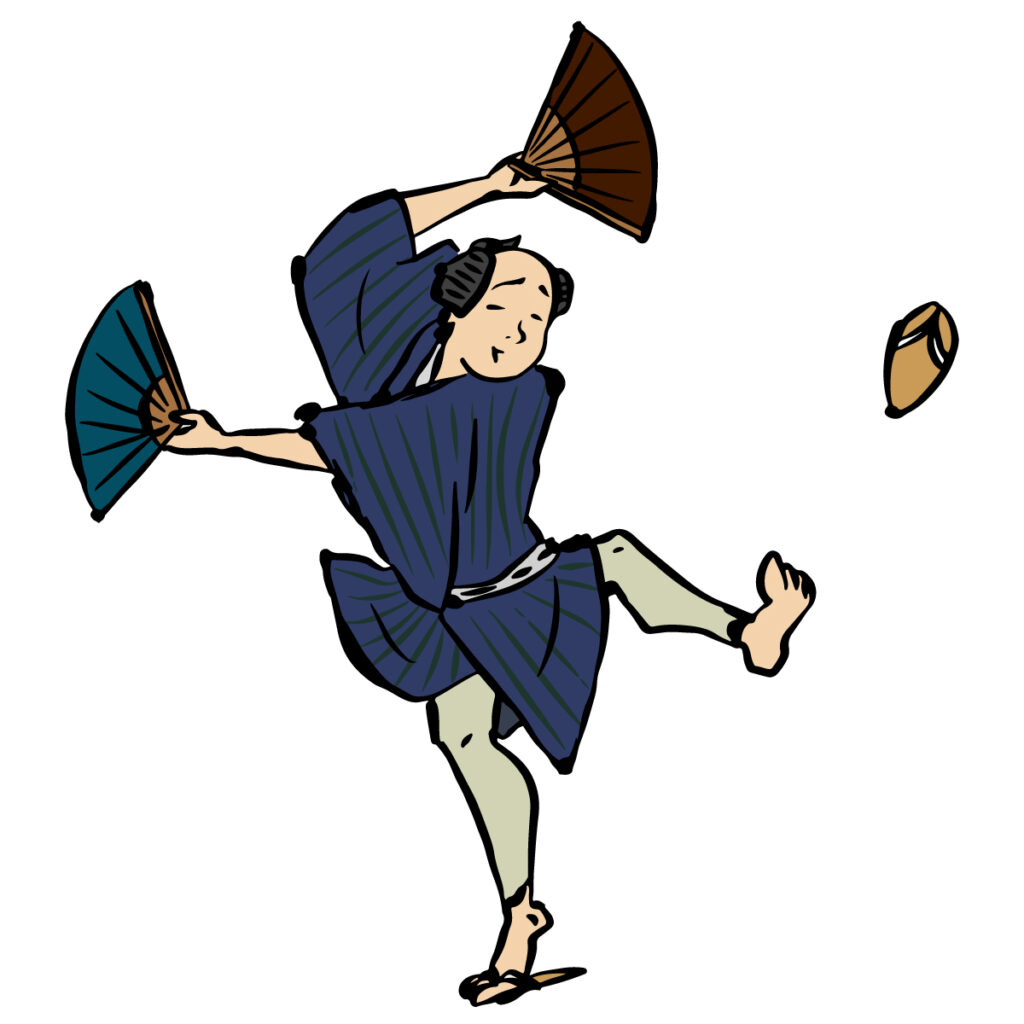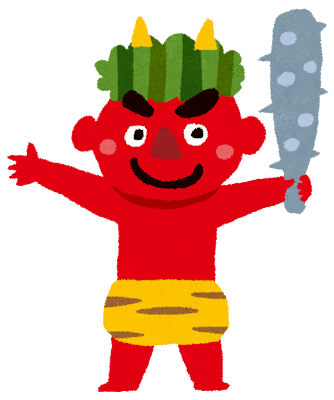Hello! It is the blog How Unique Japan!
We always share Japanese features through this web page.
So, what will come today?
This time, we want to touch on the most famous Japanese monster (or demon), Oni.
You might have already seen it because of its popularity in entertainment (Anime, video games, musicals, whatever).
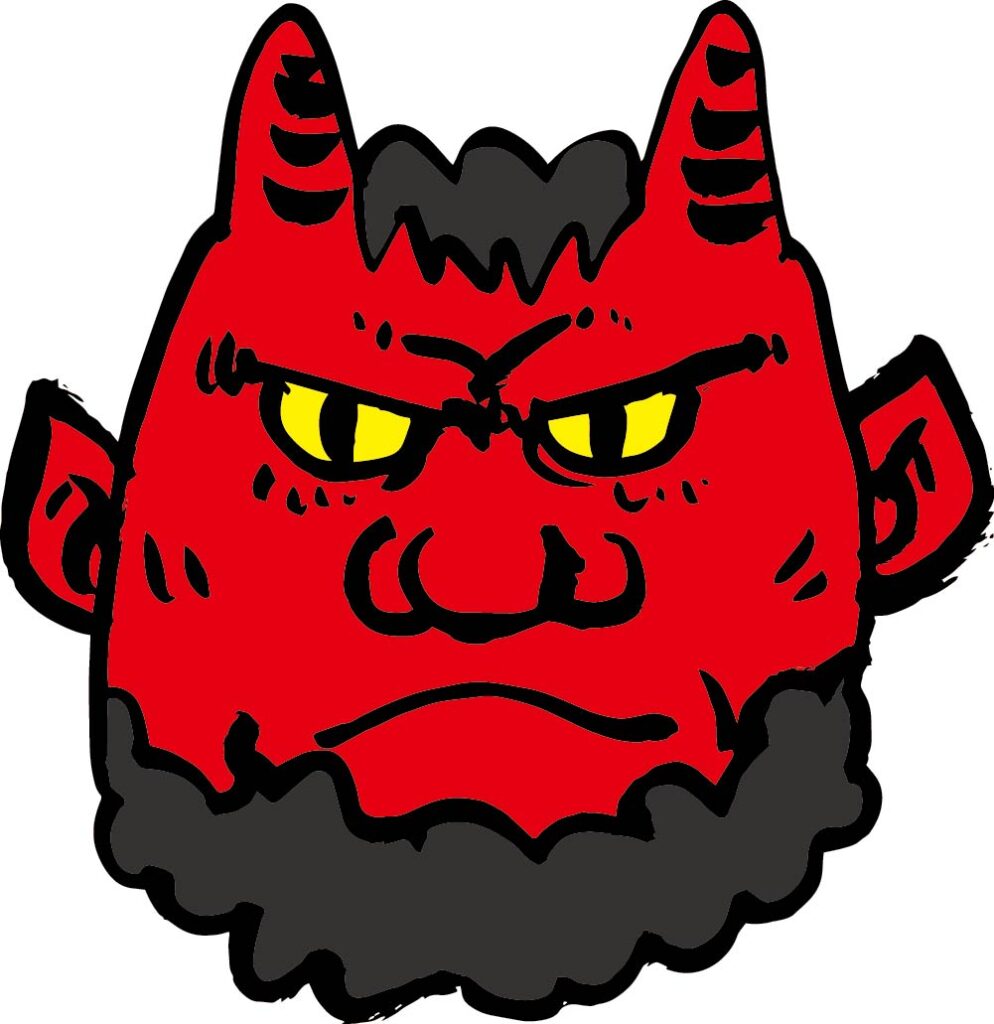
However, they have been in Japanese fairy tales and legends since ancient times.
Indeed. The tales of the monster are rather old.
In common, they are big with scary faces, claws, and fangs, and sometimes their skin color is red.
And do not forget. The Oni have horns (a number of them are random) on their heads.
The form is exactly like a demon from European and Western legends.
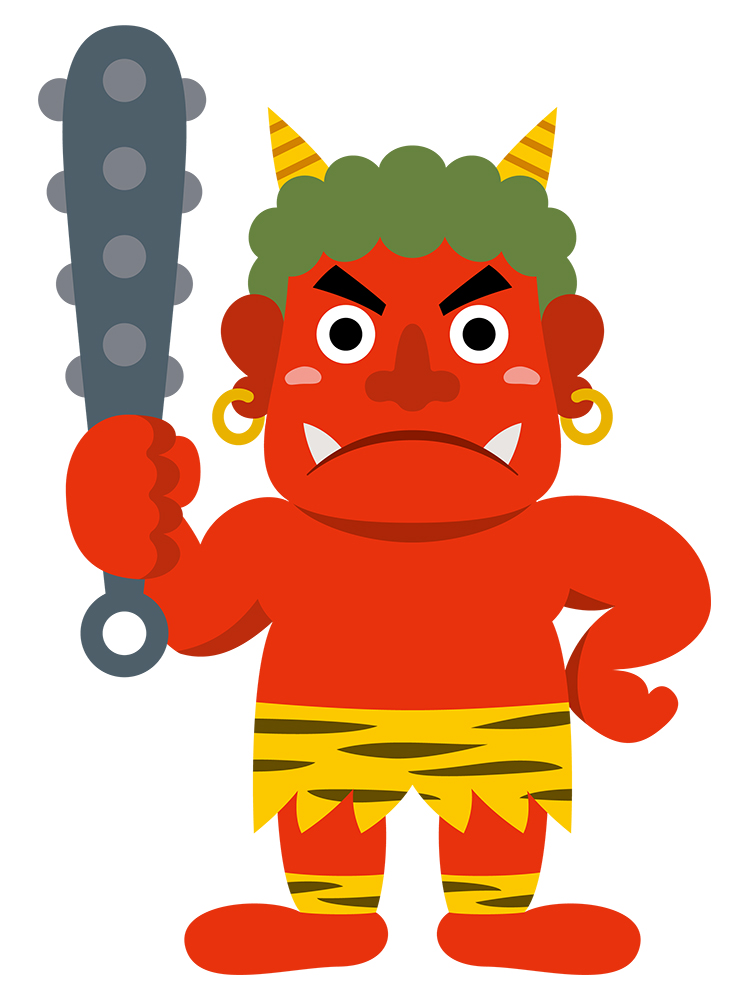
The difference between them is the ending of the stories. Interestingly, some legends or old stories conclude that the Oni became servants of God (or God itself) after repaying their sins.
Not yet. There are also heartwarming fairy tales about the monsters. One said that a big Oni sacrificed himself to create a stable bridge over the intense river, and then the villagers could safely cross the river to the other side.
There are a few examples. It means Japan has countless stories about the monsters that are still going on.
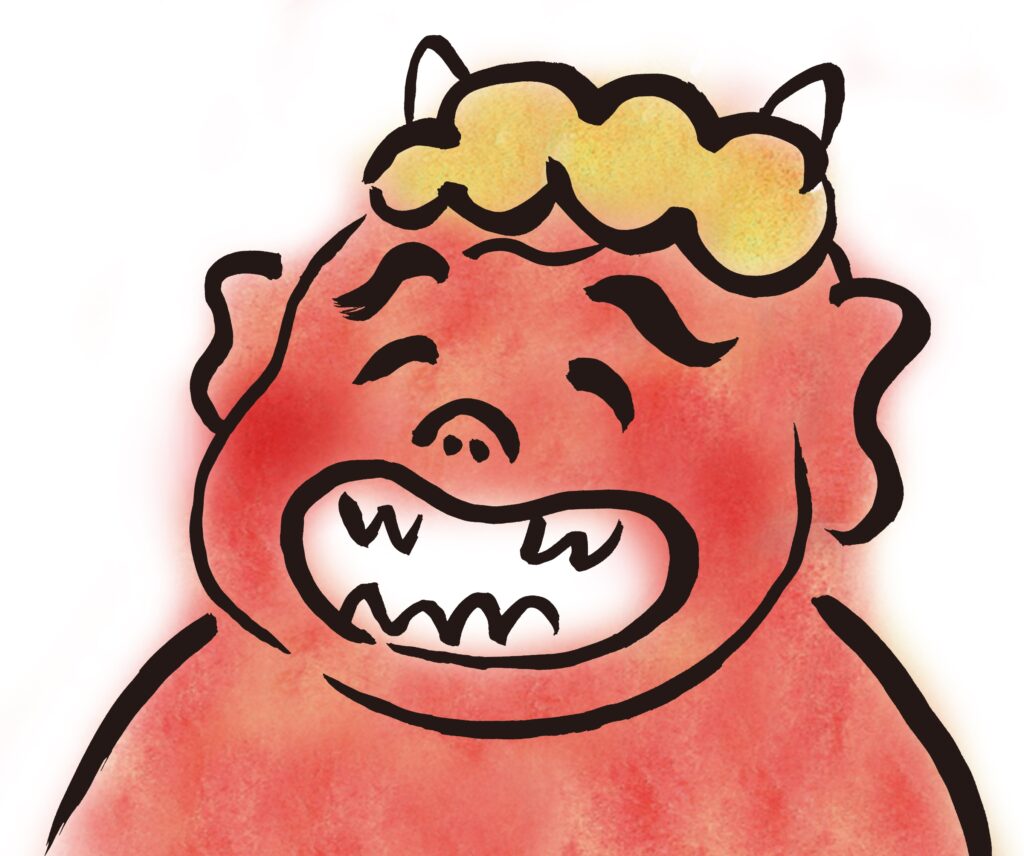
It seems like we accept them as beloved characters.
It differs from monsters from any other country because heroes or holy powers should defeat those villains in any fairy tale.
So, what is such a unique monster? And what history or story is behind it?
The souse of Oni
After all, those ideas originated in China.
Japan adopted advanced economic and governmental systems from China, including the use of Kanji characters, around the 5th and 6th centuries.
Thus, we can write the monsters with one character (Kanji) from China. It is 鬼 (Oni).
In that country, it means the soul of a dead person that can cause any disasters, for instance, an illness and bad fortune.
Thus, the ancient Chinese were scared of them. It is similar to the feeling that humans always fear the dark.
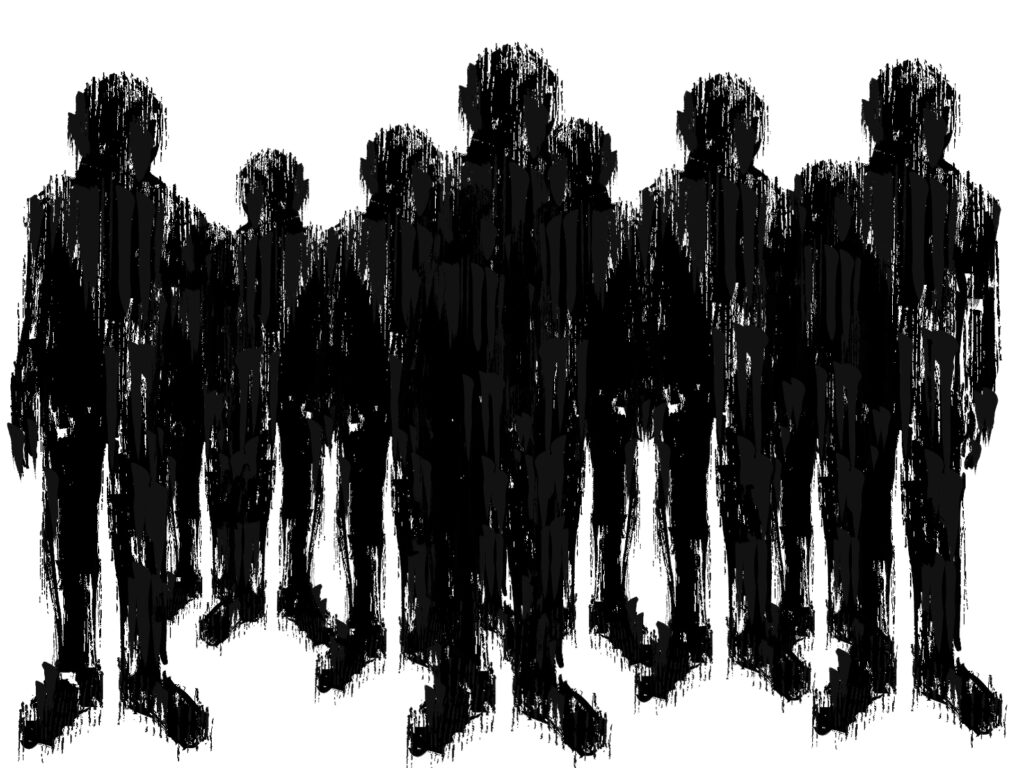
That was an acceptable idea for the ancient Japanese. They already (and also) feared unknown things, as they could not see anything in the darkness, before the new culture arrived from China.
Indeed.
First of all, the Oni was not about the monster. Then, when did the idea transform?

Significant changes occurred during the Kamakura (1180 – 1336) and Muromachi (1338 – 1573) periods.
It was a civil war period. During wartime, each general tried to conquer the other prefectures/lands. Thus, many defeated warriors (Bushi/Samurai) and generals were around Japan.
That was a problem because some of them united to form a gang of bandits.
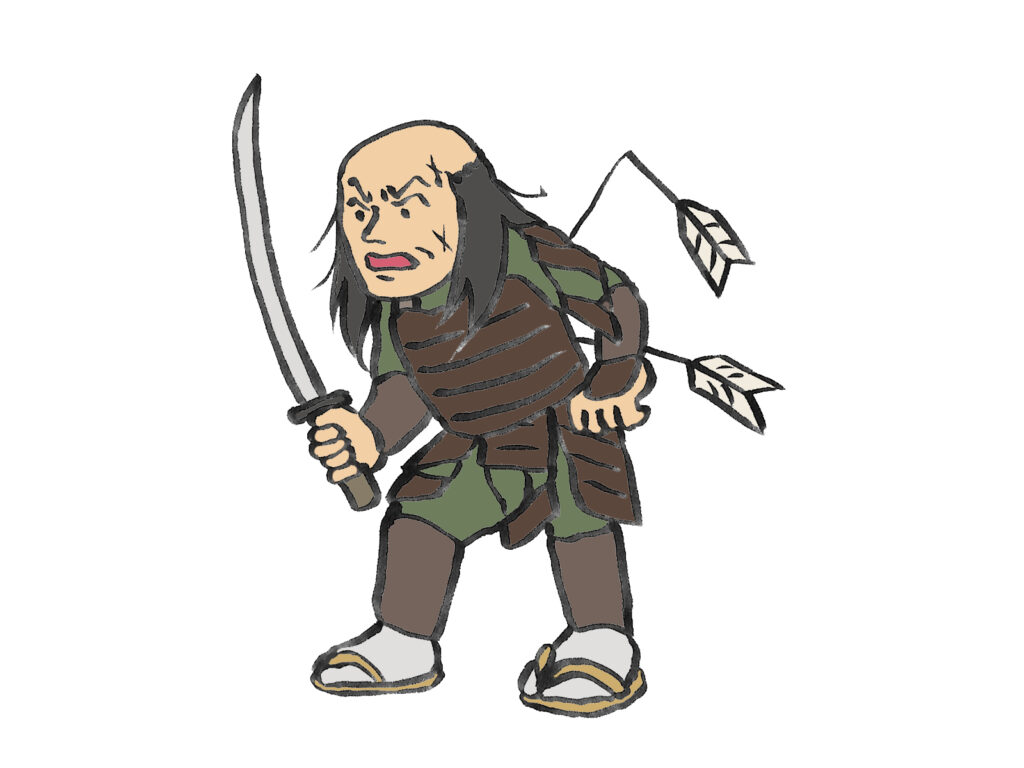
So, the old Japanese (villagers or citizens) made them more threatening. They said the bandits were aggressive, like wild animals or evil/demons.
You know. A rumor that instills fear in people will spread widely.
During the process, people added some extra options – for example, they are big with threatening faces. They also have claws, fangs, and horns. So, they created Oni.
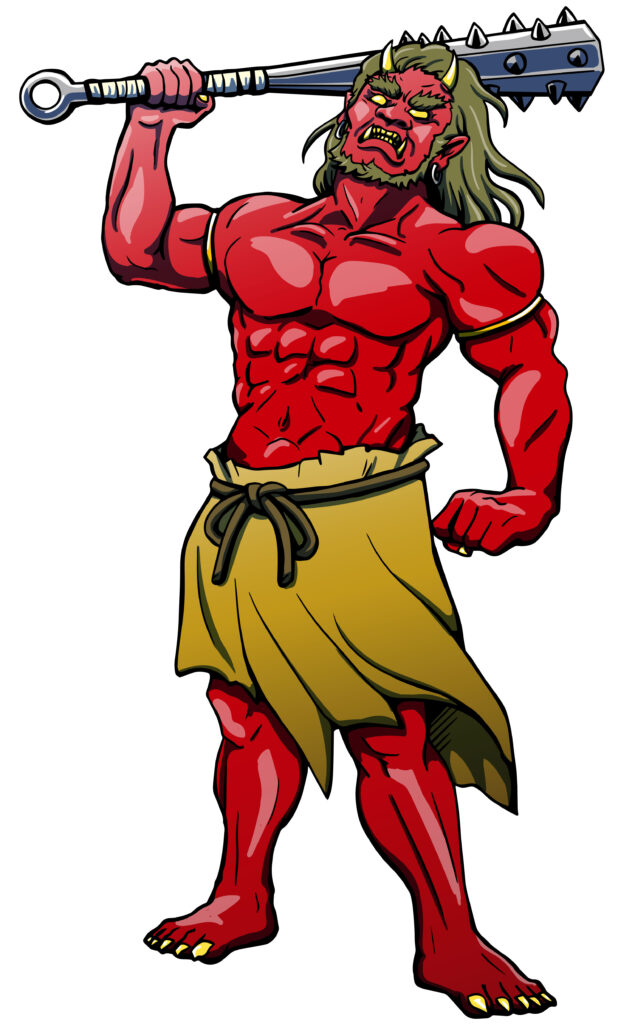
The creation was willingly acceptable for entertainment. The ancient theater/play writers utilized those monsters as a spice for stories. Yes. They finally became villains.
Monsters, specifically Oni, frequently appear in various fairy tales and plays. It is the reason for their recurring presence in these stories.

Additionally, the two main religions of Japan, Shintoism and Buddhism, have also used this character in legends and fairy tales to promote their teachings.
(If you are interested in how the Japanese successfully keep two different religions, please check this page. Religion in Japan.)
It should lead to one more question. How did the monster change its character from villain to hero-like?
Shintoism is the key
On the front page of this blog, we have written about the unique perspective of Shintoism on observing our environment.
(If you have not seen it yet, please try this page!)
So, lessons in that religion said that each natural object, rock, river, and mountain, for instance, should have its soul.
Then, the ancient people admired those souls. If some objects are impressive in size or beauty, they could be gods.
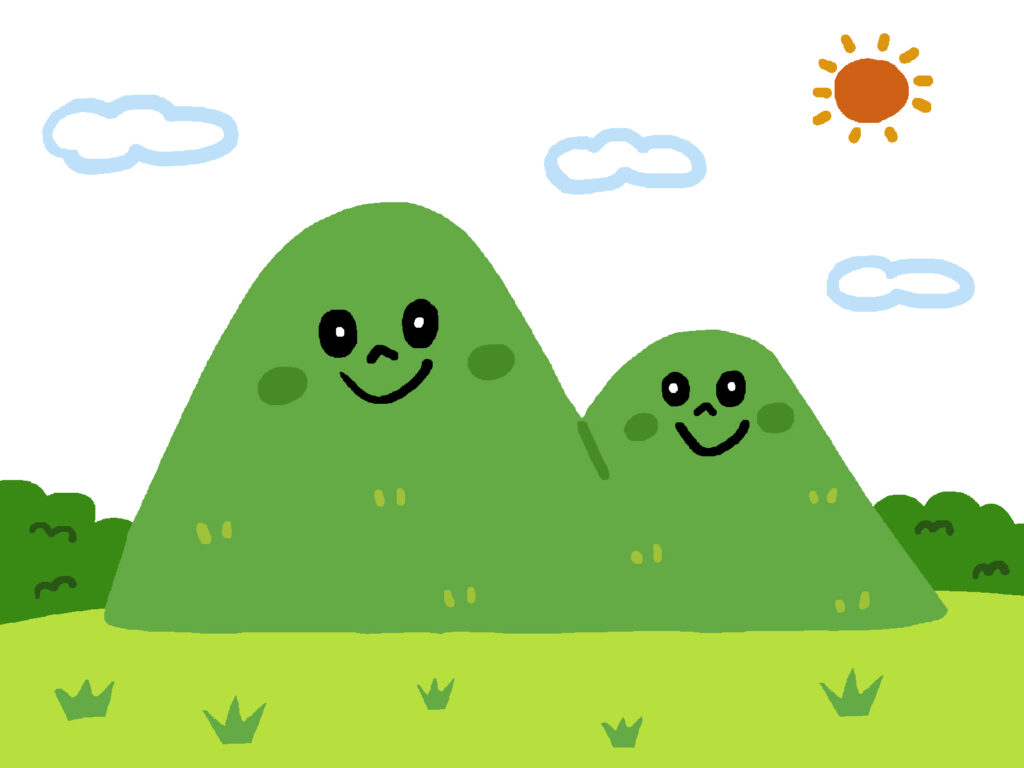
Indeed, the Japanese respect nature (with awe or fear) as both a grace and a destroyer. Because natural phenomena are usually threatening.
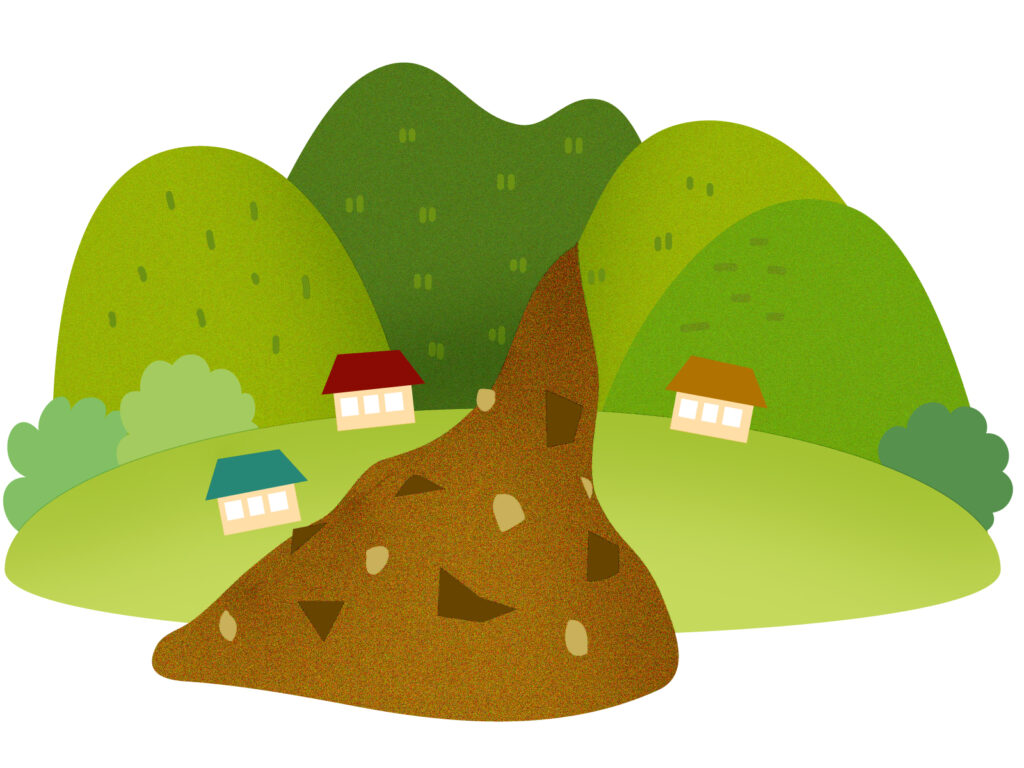
Finally, the unique monster, Oni, takes this part.
So, the old Japanese also admired the Oni with fear and respect. Thus, they sometimes became god-like after they expressed remorse for their sins.
And even some legends and fairy tales said they sacrificed themselves for us.
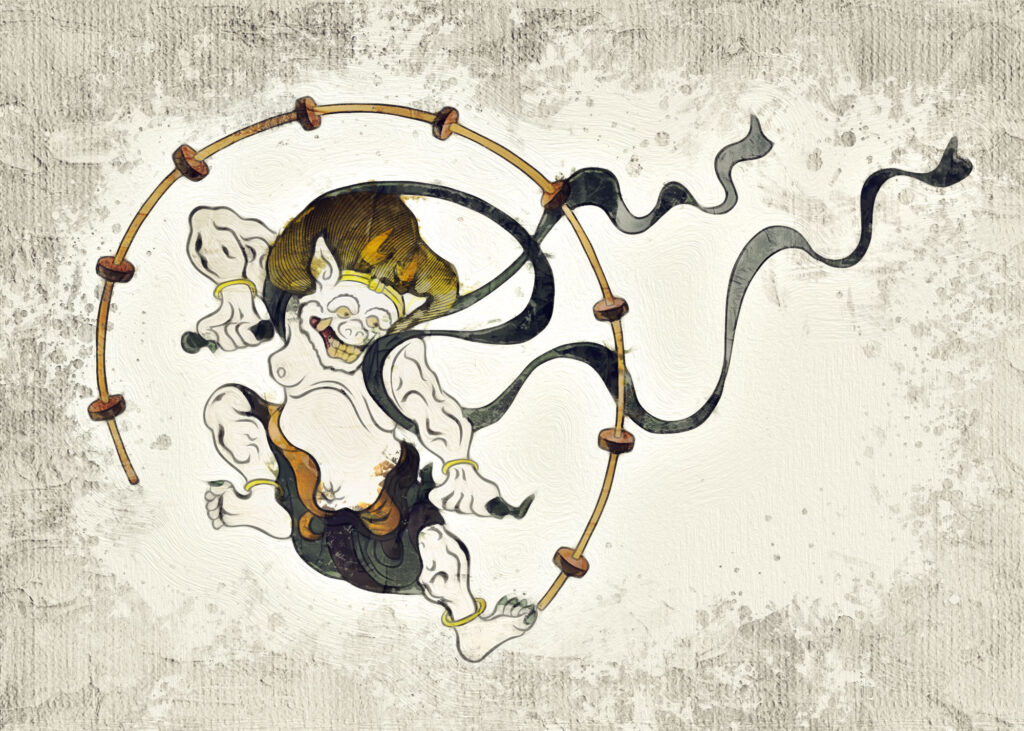
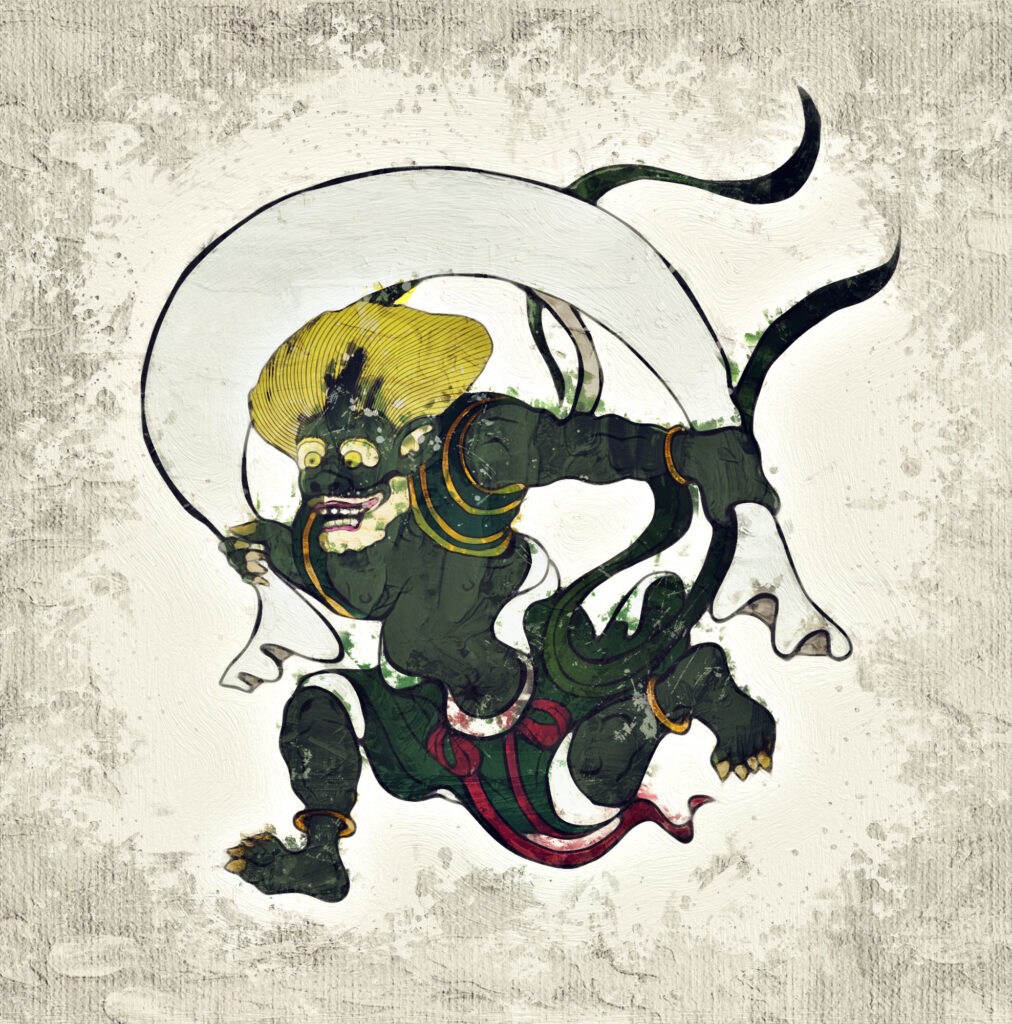
Please look at those old drawings. They are Fuzin (Wind of God) and Raizin (Thunder of Got). Both are similar to the monster.
There is no doubt. The unique perspective/approach to the world of the Japanese created the unique monster.
Next, let us tell you one of the famous legends about how one Oni became a God.
Legend of Kishimojin (Cannibal demon became a protector)
The legend is a good example of how a demon becomes god-like.
Her name is Kishimojin. She is a female demon who was self-centered and gave birth to over 500 children. (Some legends said she had 10,000. Wow.)
You might have understood. Raising children is a tough duty for a mother.
The demon was no exception.
Yes. It needed to stay healthy to care for the babies.
Her solution was cruel. She kidnapped other children and ATE THEM.
There is no doubt that people were scared of her.
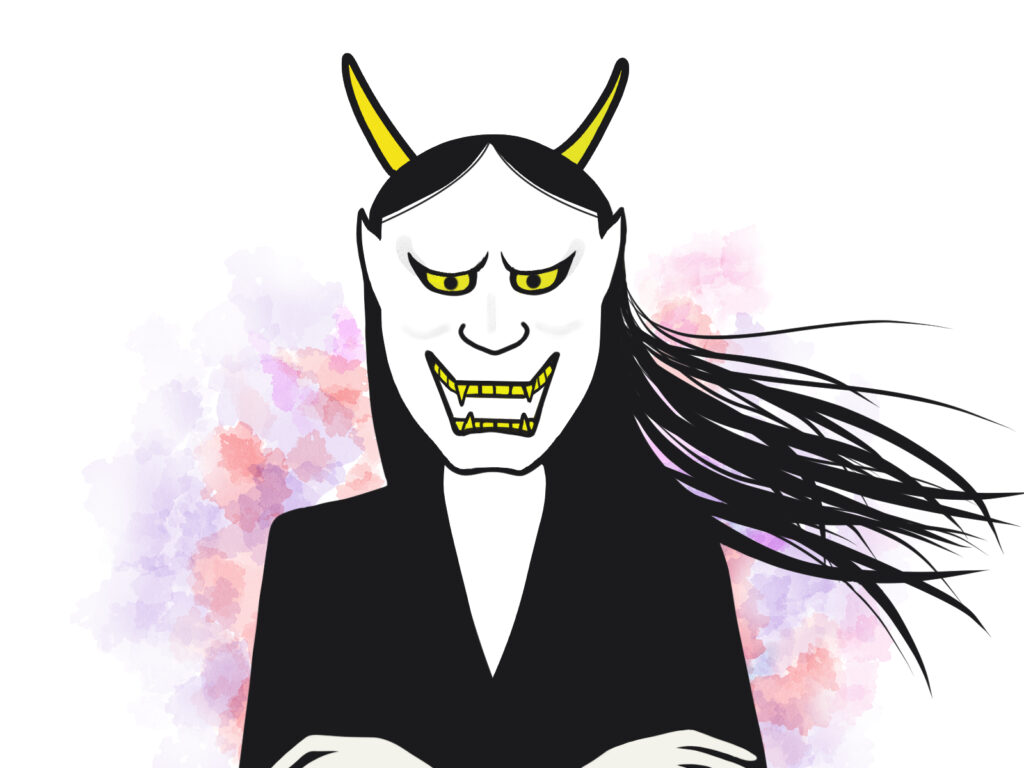
Buddha also had consideration for her violence. Then, He decided to take her youngest child and hide him in a pot. (He never intended to harm her child.)
She got an enormous grief. She searched for the baby throughout the world, even in heaven and hell. It was her first experience of such sadness.
When she felt tired at the edge of the real world, finally, Buddha appeared with the youngest child. He criticized her and spoke.
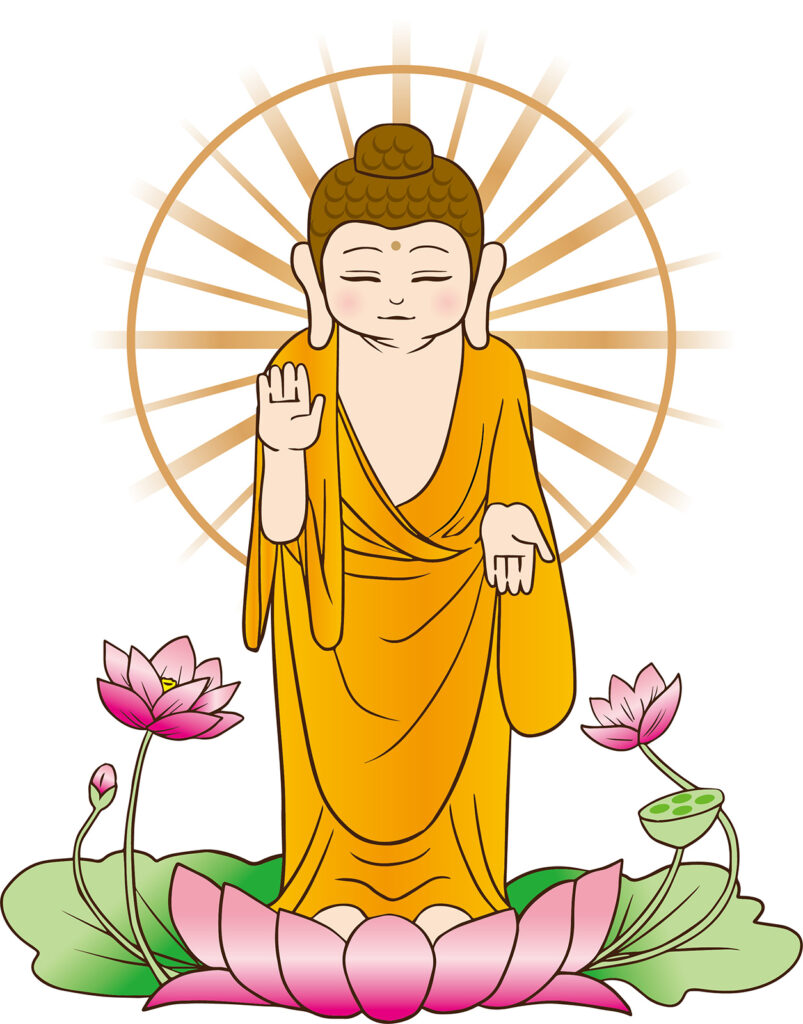
“Look at yourself. You got a crazy sorrow when you lost your one baby, although you already have over 500 children. However, you may have taken only one precious baby for each family. What have you done!”
She was shocked and shivered for her sin and swore to Buddha she would never kidnap or eat the other children.
Then, she decided to protect all children for as long as the world exists. So, she became a great protector of all children, ensuring their healthy development.
One more fun fact.
She stopped being a carnivore. However, she still needed food.
So, Buddha gave pomegranates instead of her previous food(?). That is why there are many statues of her holding the branches.
Why is that fruit? It is because the fruit contains several small berries. They became a symbol of blessing for children.
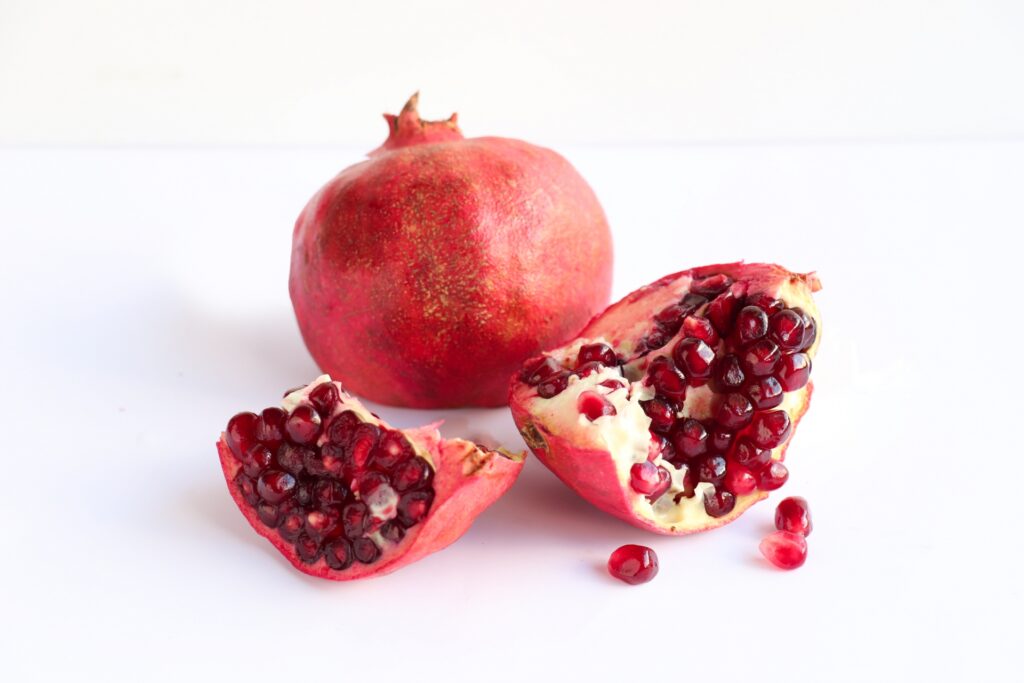
That is the legend about Kishimojin.
Surprisingly, the ancient Japanese took that legend seriously. So, they established her shrine in 1578.
The shrine, Kishimojin Shrine, was named after her. We can access it by tram from Otsuka Station, one station on the famous Yamanote Line.
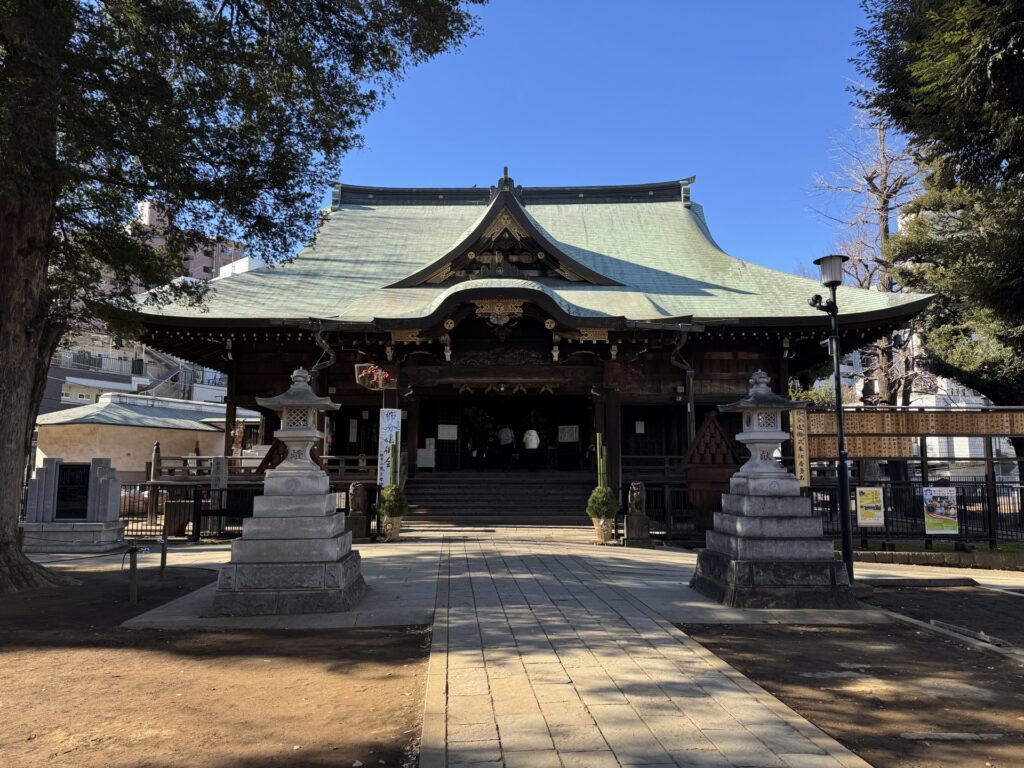
The feature is the unique letter of the shrine.
Do you remember the Kanji character about the Oni? It was 鬼.
Look at the picture below. That is the letter about that god in the shrine.
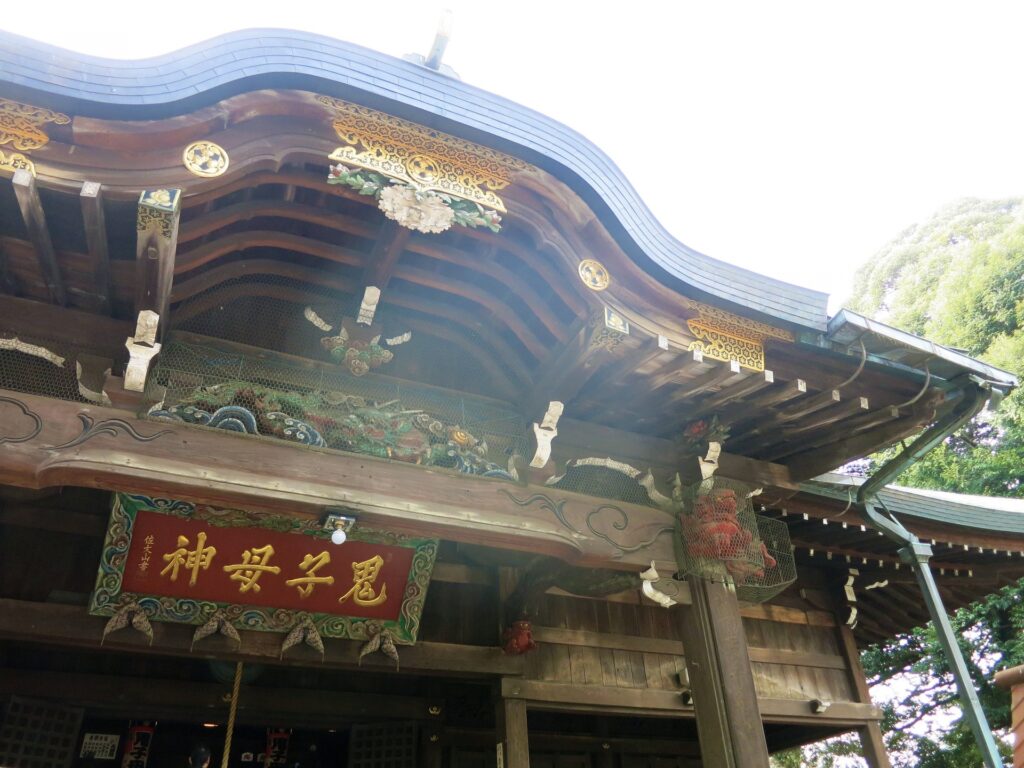
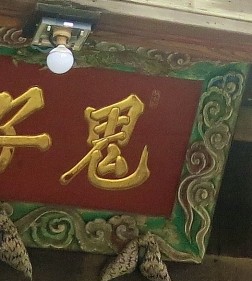
Did you get it?
It has no protrusion (first writing stroke order) on top.
No bulge. Indeed.
She, Kishiboshin, became a great protector. Then, she DROPPED THE HORN. It is why the capital, 鬼, does not have a top in the shrine.
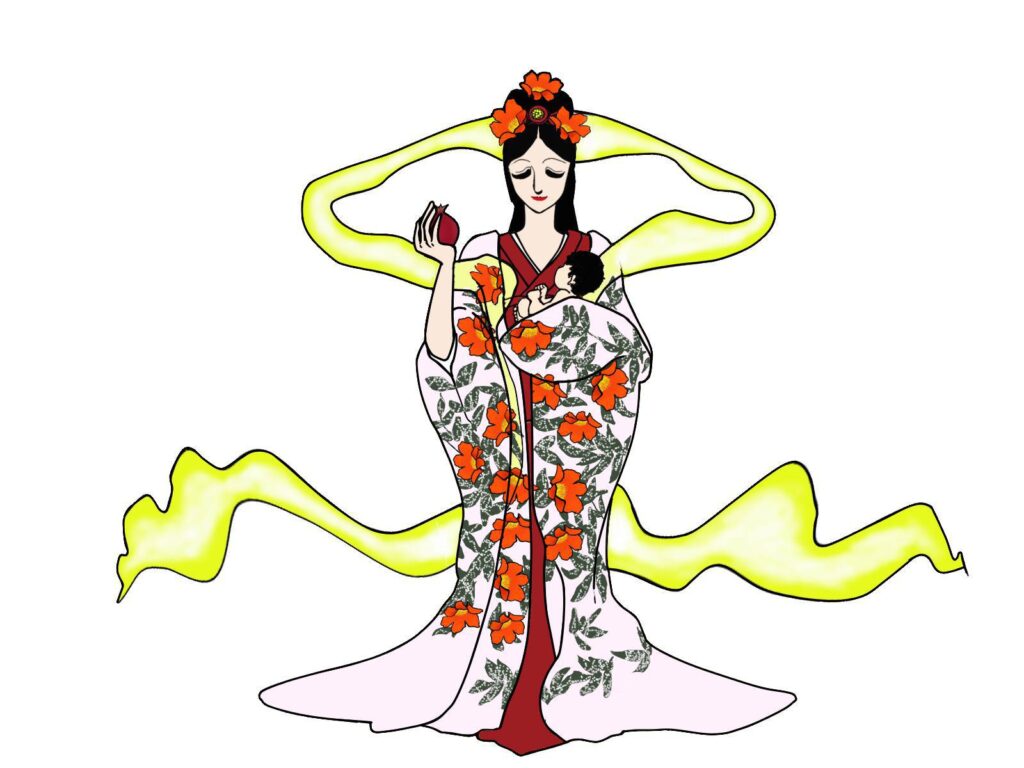
It is a catchy legend.
However, such a famous god is not the only example of how someone transformed into a god-like being.
Let us show you one more famous protector of PLAGUE.
He is Tsuno Daishi. (A High Monk with Horn)
Legend of Tsuno Daishi
His name was Ryougen (912 – 985), and he was a Japanese Buddhist. Before he died, Japan was experiencing the worst season of plague.
In 983, Ryougen started Zen in front of a big mirror to pray for the people who had the disease to recover.
Then, his reflection gradually changed into the Oni. He was horrible and scary because he had big horns on his head. The body also consisted of bones.
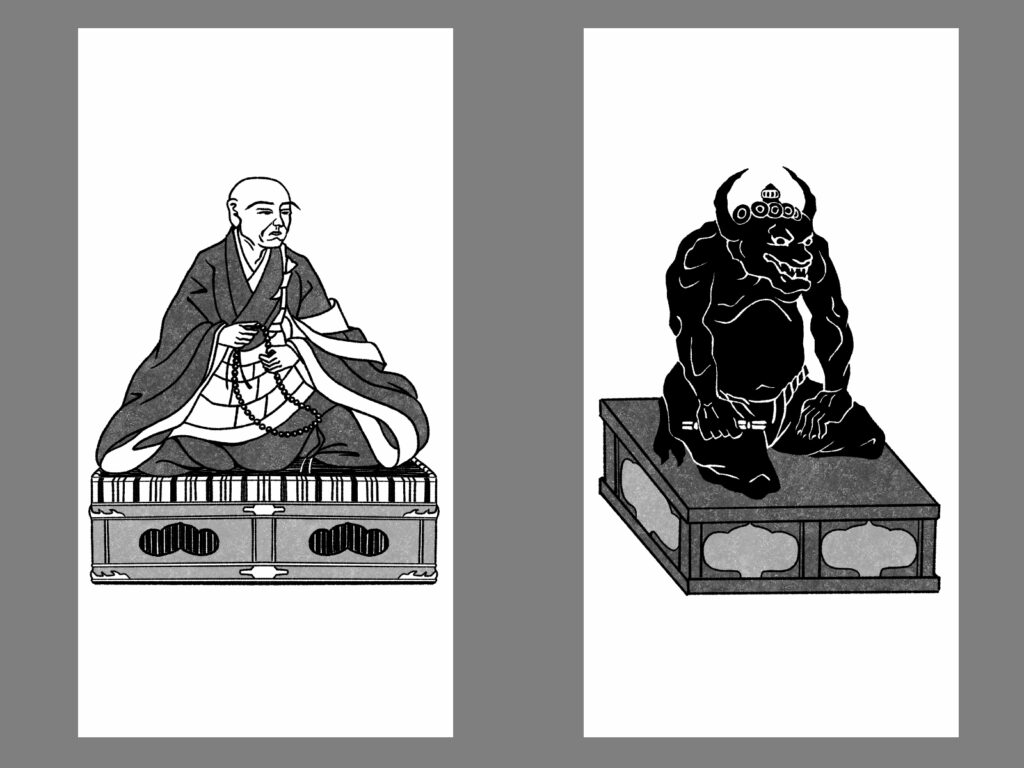
He was surprised (of course). But he ordered his disciples to copy/draw that monster.
Strangely, the plague did not come to each villager who did it.
Besides, the disease was not the only one. The other disasters also prevented them.
The design (of the talisman) has not changed for nearly 1000 years. Incredible.
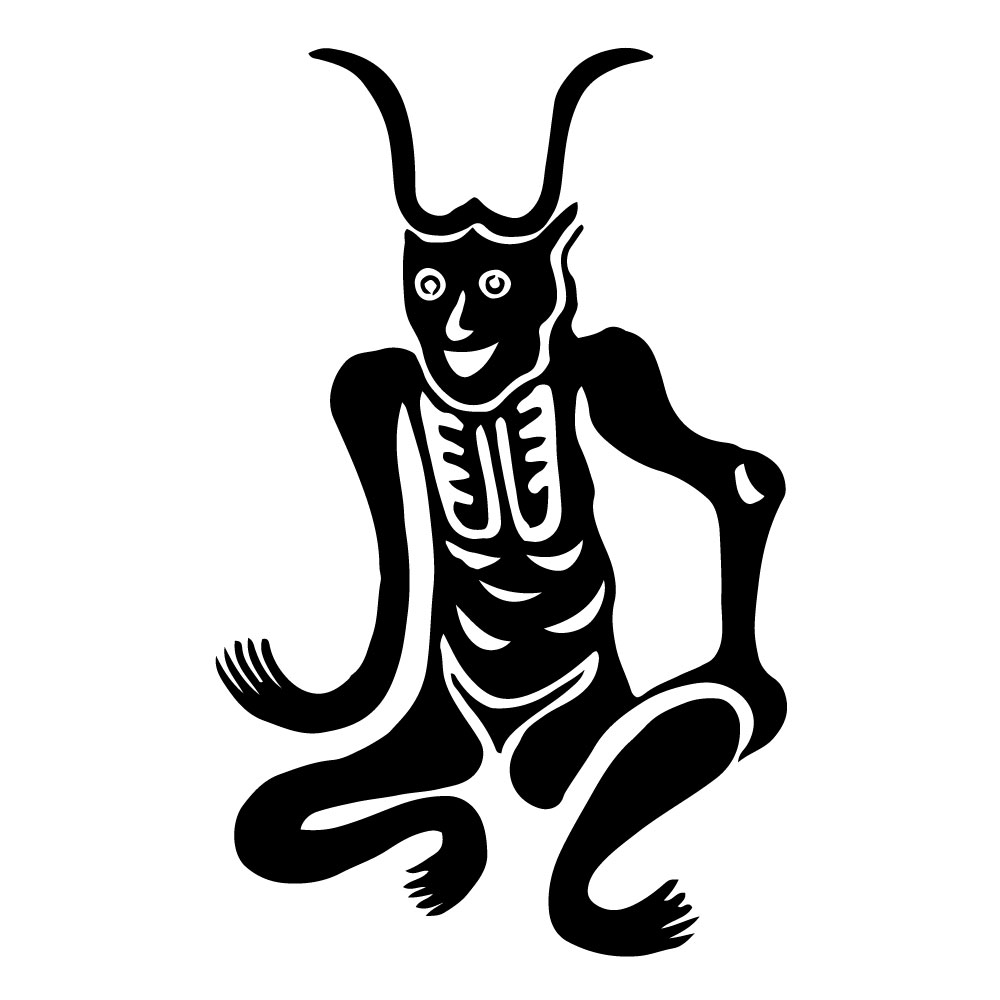
Since then, the villagers have been called the monk Tsuno Daishi or Yaku Yoke (amulet) Daishi.
The bill is still inherited and sold to us.
To close
Thank you so much for reading this article, everyone! It is all today!
Oh, wait, please. Our blog features additional articles that highlight the unique aspects of Japan. Now we have them (articles) about Religion in Japan, the Edo era, foods, and the Japanese lifestyle.
Each one should also contain the historical and feature progress we have made.
So, if you are interested in those historical tips, the blog would help boost your knowledge!
Common! Visit here (the front page)!
Let us say thanks regards (lol)! See you for the next article!
